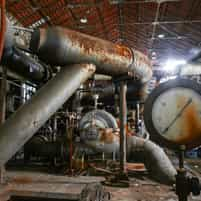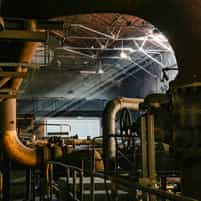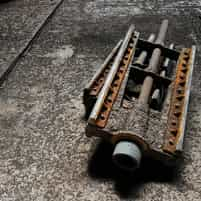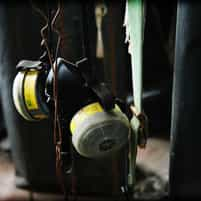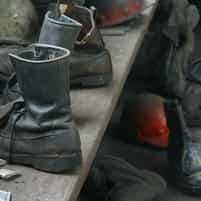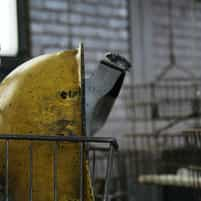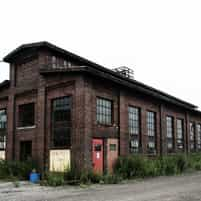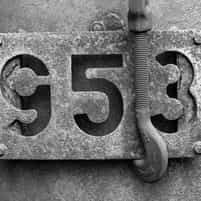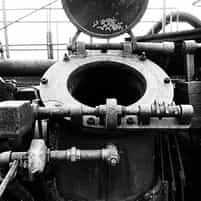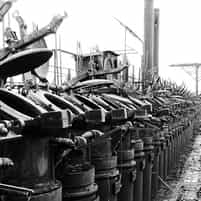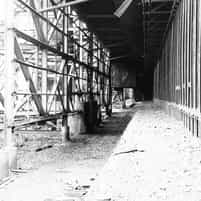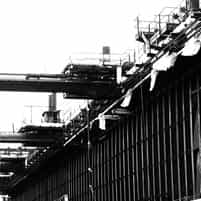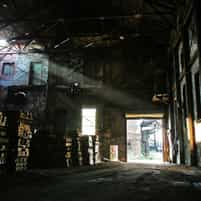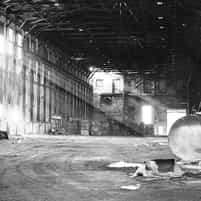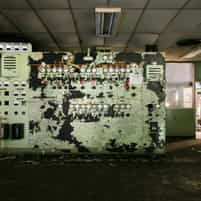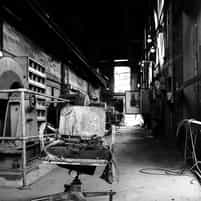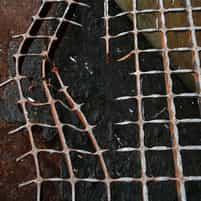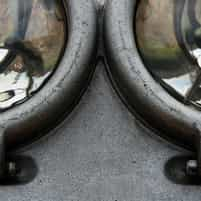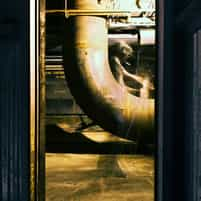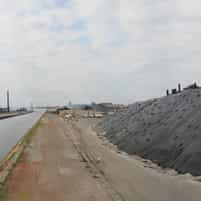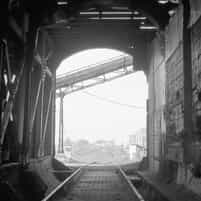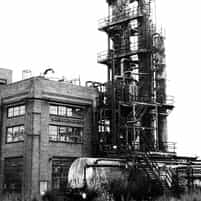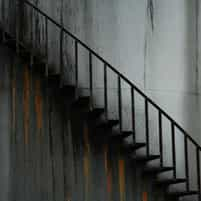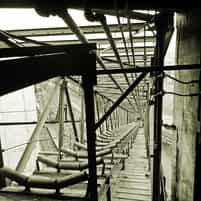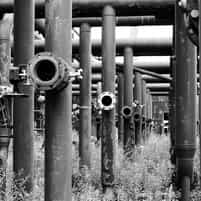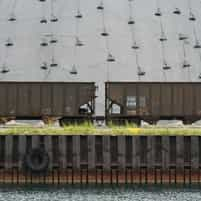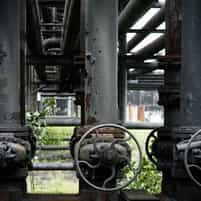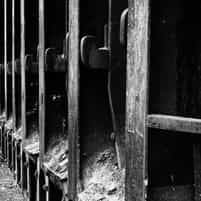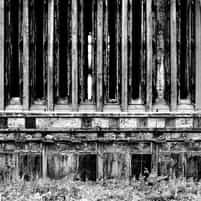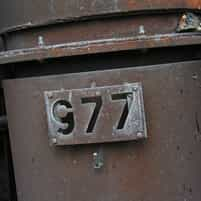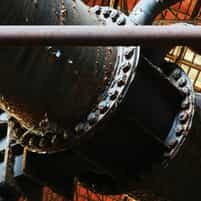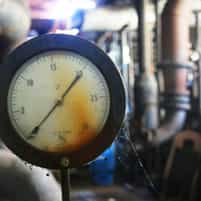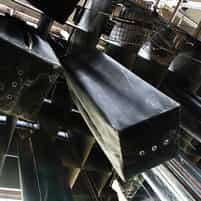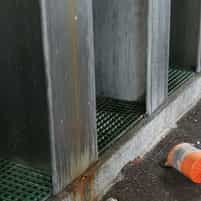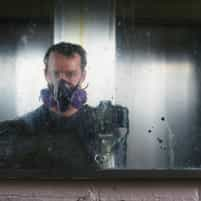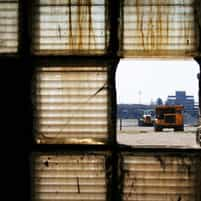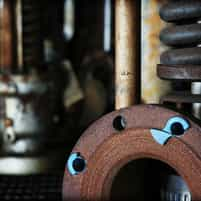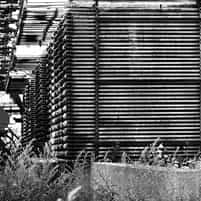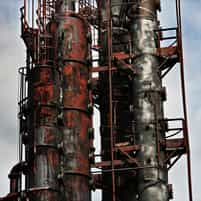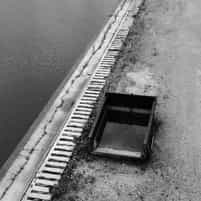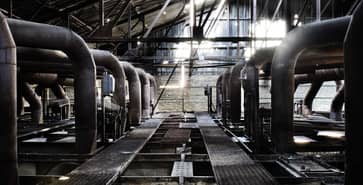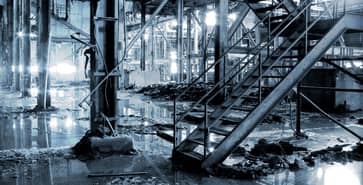Bethlehem Steel Mill
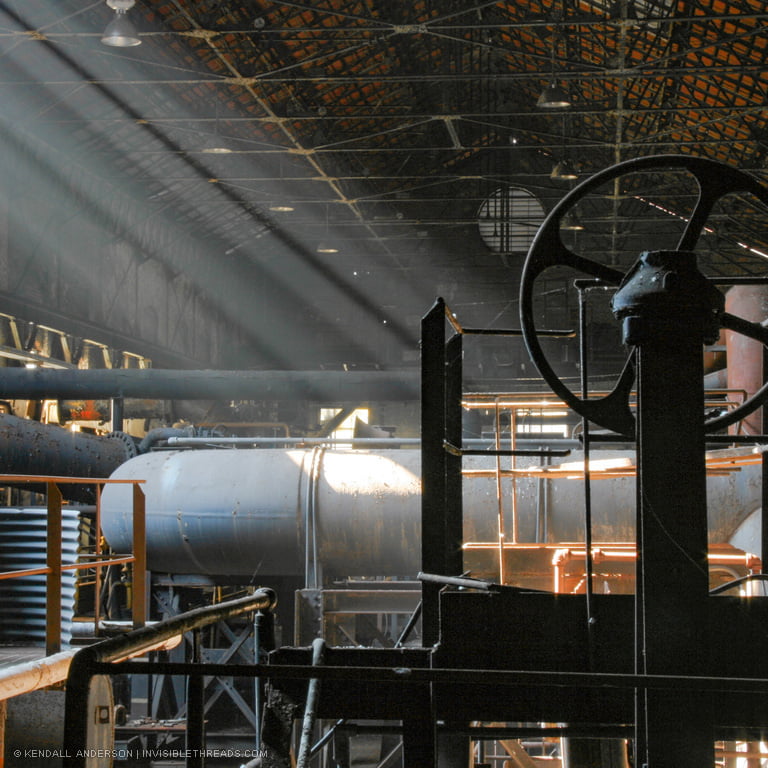
- Year Built: 1900
- Year Closed: 1983
This was once the 4th largest steel mill in the world.
The Bethlehem Steel plant in Lackawanna (Buffalo) sits on a sprawling 1,300 acre site and was home to over 100 buildings and employed 20,000 workers. In the 1960s, it was producing record amounts of steel at a time of great profitability.
This period was short-lived.
During the late 1970s, production was reduced and over 10,000 employees were laid off. Steelmaking operations were stopped abruptly in 1983 after a record loss of $1.5 billion. Coke oven operations continued but by 2001, they too were halted.
The Pump House
-
 View photo with title: Sunbeams at the Pump House
View photo with title: Sunbeams at the Pump House
-
 View photo with title: Gauge and Pipes in an Intricate Dance
View photo with title: Gauge and Pipes in an Intricate Dance
-
 View photo with title: Pump House Sunbeams
View photo with title: Pump House Sunbeams
-
 View photo with title: Corner Pipe
View photo with title: Corner Pipe
-
 View photo with title: Pump House Sunbeams no.2
View photo with title: Pump House Sunbeams no.2
-
 View photo with title: Overhead Pipe
View photo with title: Overhead Pipe
-
 View photo with title: Equipment Fragment
View photo with title: Equipment Fragment
Plans for the Tonawanda Coke Corporation to acquire and continue the coke operations were never finalized, leaving the entire site unused.
Large industrial sites like this (especially abandoned ones) have a sort of ‘scorched-earth’ quality to them. The context was turn-of-the-century buildings — many in significant disrepair — combined with a barren landscape populated by industrial equipment.
Furnace & Coke Ovens
-
 View photo with title: Coke Battery #9
View photo with title: Coke Battery #9
-
 View photo with title: Coke Battery no. 953
View photo with title: Coke Battery no. 953
-
 View photo with title: Below the Coke Battery
View photo with title: Below the Coke Battery
-
 View photo with title: Coke Oven Deck
View photo with title: Coke Oven Deck
-
 View photo with title: Coke Oven Opening
View photo with title: Coke Oven Opening
-
 View photo with title: Coke Ovens -- The 930 Series
View photo with title: Coke Ovens -- The 930 Series
-
 View photo with title: Coke Oven Array
View photo with title: Coke Oven Array
-
 View photo with title: Steel Corridor no.1
View photo with title: Steel Corridor no.1
-
 View photo with title: Steel Corridor no.2
View photo with title: Steel Corridor no.2
-
 View photo with title: The Furnace Complex no.2
View photo with title: The Furnace Complex no.2
-
 View photo with title: Furnace Cavity texture
View photo with title: Furnace Cavity texture
-
 View photo with title: The Furnace Complex no.1
View photo with title: The Furnace Complex no.1
Interior Spaces
-
 View photo with title: Warehouse Exit
View photo with title: Warehouse Exit
-
 View photo with title: Unknown Equipment
View photo with title: Unknown Equipment
-
 View photo with title: Sunbeam on Tank
View photo with title: Sunbeam on Tank
-
 View photo with title: Injured But Proud
View photo with title: Injured But Proud
-
 View photo with title: Weathered Instrument Panel
View photo with title: Weathered Instrument Panel
-
 View photo with title: Welcome To My Workshop
View photo with title: Welcome To My Workshop
-
 View photo with title: Attic Space
View photo with title: Attic Space
-
 View photo with title: Warehouse Interior
View photo with title: Warehouse Interior
-
 View photo with title: Fancy Chair
View photo with title: Fancy Chair
The Lackawanna site in particular is the source of controversy regarding a contract with the United States federal government. Between 1949 and 1952, the rolling mills were used to produce uranium fuel rods. However, workers were not made aware of the dangers nor were they given protective equipment. Many workers developed cancer. Difficulty in acquiring compensation was covered in an article by the New York Times and legislation by Senator Chuck Schumer in the Ed Walker Memorial Act.
Most recently (2007), a group of 8 wind turbines were built on the site as part of the Steel Winds project.
Miscellaneous
-
 View photo with title: Disintegrator Sub Station Interior
View photo with title: Disintegrator Sub Station Interior
-
 View photo with title: Disintegrator Sub Station
View photo with title: Disintegrator Sub Station
-
 View photo with title: Steel Train
View photo with title: Steel Train
-
 View photo with title: Bent Steel Grate
View photo with title: Bent Steel Grate
-
 View photo with title: Sifting Pit
View photo with title: Sifting Pit
-
 View photo with title: Train Engine Headlights
View photo with title: Train Engine Headlights
-
 View photo with title: Relaxed, Yet Cautious
View photo with title: Relaxed, Yet Cautious
-
 View photo with title: Battery Acid Tanks
View photo with title: Battery Acid Tanks
-
 View photo with title: Ghost and the Pipe
View photo with title: Ghost and the Pipe
Exterior Elements
-
 View photo with title: Bethlehem Steel Panorama
View photo with title: Bethlehem Steel Panorama
-
 View photo with title: Just A Fragment
View photo with title: Just A Fragment
-
 View photo with title: The Grand Staircase
View photo with title: The Grand Staircase
-
 View photo with title: The Power Corridor
View photo with title: The Power Corridor
-
 View photo with title: Train Tunnel
View photo with title: Train Tunnel
-
 View photo with title: Steel Amusement Park
View photo with title: Steel Amusement Park
-
 View photo with title: Benzol Recovery and Refinery Plant
View photo with title: Benzol Recovery and Refinery Plant
-
 View photo with title: Conveyor Belt Mid-point
View photo with title: Conveyor Belt Mid-point
-
 View photo with title: Watching Over Buffalo
View photo with title: Watching Over Buffalo
The 'B-Roll' / Coke Ovens
Only included for completeness. Lower your expectations accordingly!
The 'B-Roll'
Only included for completeness. Lower your expectations accordingly!
-
 View photo with title: Pump House Revealed
View photo with title: Pump House Revealed
-
 View photo with title: Big Pipe, Little Pipe
View photo with title: Big Pipe, Little Pipe
-
 View photo with title: Stained Gauge
View photo with title: Stained Gauge
-
 View photo with title: I Once Had A Brother
View photo with title: I Once Had A Brother
-
 View photo with title: Lockers Above
View photo with title: Lockers Above
-
 View photo with title: Shower Stalls
View photo with title: Shower Stalls
-
 View photo with title: Dishevelled Self-Portrait in Grungy Mirror
View photo with title: Dishevelled Self-Portrait in Grungy Mirror
-
 View photo with title: Room With A View
View photo with title: Room With A View
-
 View photo with title: Sproing!
View photo with title: Sproing!
-
 View photo with title: Instrument Panel
View photo with title: Instrument Panel
-
 View photo with title: Tubular Array
View photo with title: Tubular Array
-
 View photo with title: Rusting Stacks
View photo with title: Rusting Stacks
-
 View photo with title: Container By Water
View photo with title: Container By Water
-
 View photo with title: Flaking Drum
View photo with title: Flaking Drum
-
 View photo with title: Conduit Shadows
View photo with title: Conduit Shadows
-
 View photo with title: Torn Mattress and Paint
View photo with title: Torn Mattress and Paint
-
 View photo with title: Cobwebs
View photo with title: Cobwebs
-
 View photo with title: Rusting Door
View photo with title: Rusting Door
-
 View photo with title: Death Star Aesthetics
View photo with title: Death Star Aesthetics
-
 View photo with title: Bethlehem Steel Tanker Truck
View photo with title: Bethlehem Steel Tanker Truck
Related Galleries
-
 View gallery with title: Bethlehem Steel North Office - Photos of Bethlehem Steel's heavily-decaying office building, built in 1901. Lots of decay, equipment, artifacts and a chemist's lab.
View gallery with title: Bethlehem Steel North Office - Photos of Bethlehem Steel's heavily-decaying office building, built in 1901. Lots of decay, equipment, artifacts and a chemist's lab.
-
 View gallery with title: Toronto Don Valley Brickworks - A large abandoned brick-making factory in Toronto from the early 1900s. Interior and exterior photos complete with equipment, kilns, machinery and catwalks.
View gallery with title: Toronto Don Valley Brickworks - A large abandoned brick-making factory in Toronto from the early 1900s. Interior and exterior photos complete with equipment, kilns, machinery and catwalks.
-
 View gallery with title: Richard L. Hearn Generating Station - Interior photos of a huge coal-fired electrical generating station in Toronto, Canada. This is industry on a huge scale, with a turbine hall, control rooms and vast, complex spaces.
View gallery with title: Richard L. Hearn Generating Station - Interior photos of a huge coal-fired electrical generating station in Toronto, Canada. This is industry on a huge scale, with a turbine hall, control rooms and vast, complex spaces.

